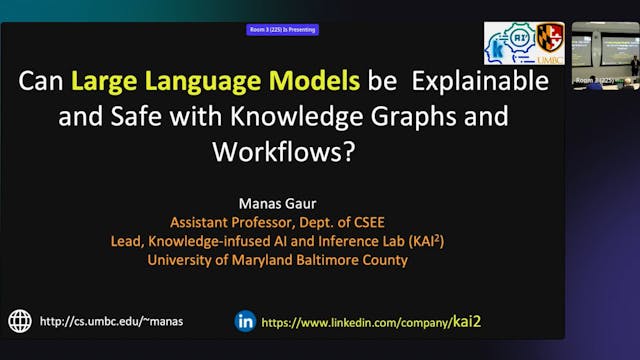Graph Embedding Techniques - Matrix Factorization to Deep Learning
Deep Learning for and with Knowledge Graphs Track
•
26m
Graph embeddings can be used for a variety of applications, including recommendation, fraud detection, and other machine learning tasks. In this work, we aim to walk through various different embedding techniques, starting with spectral approaches, moving towards graph neural networks, and finally newer, inductive techniques such as NodePiece. Throughout the tutorial, we will be implementing algorithms using the (open-source) TigerGraph Machine Learning Workbench, a tool for easily training machine learning algorithms on large-scale graph datasets. Using a variety of datasets, we will discuss the pros and cons of each technique, demonstrate them working, and examine future directions for the field of graph embedding research from the lens of industry.
Up Next in Deep Learning for and with Knowledge Graphs Track
-
Explainable AI using Background Knowl...
One of the current key challenges in Explainable AI is in correctly interpreting activations of hidden neurons. It seems evident that accurate interpretations thereof would provide insights into the question what a deep learning system has internally detected as relevant on the input, thus liftin...
-
Targeted Knowledge Infusion To Make C...
Conversational Systems (CSys) represent practical and tangible outcomes of advances in NLP and AI. CSys see continuous improvements through unsupervised training of large language models (LLMs) on a humongous amount of generic training data. However, when these CSys are suggested for use in domai...
-
Neuralsymbolic Visual Understanding a...
Visual AI has made incredible progress in basic vision tasks using deep learning techniques that can detect concepts in visual scenes accurately and quickly. However, the existing techniques rely on labelled datasets that lack common sense knowledge about visual concepts and have biased distribut...



